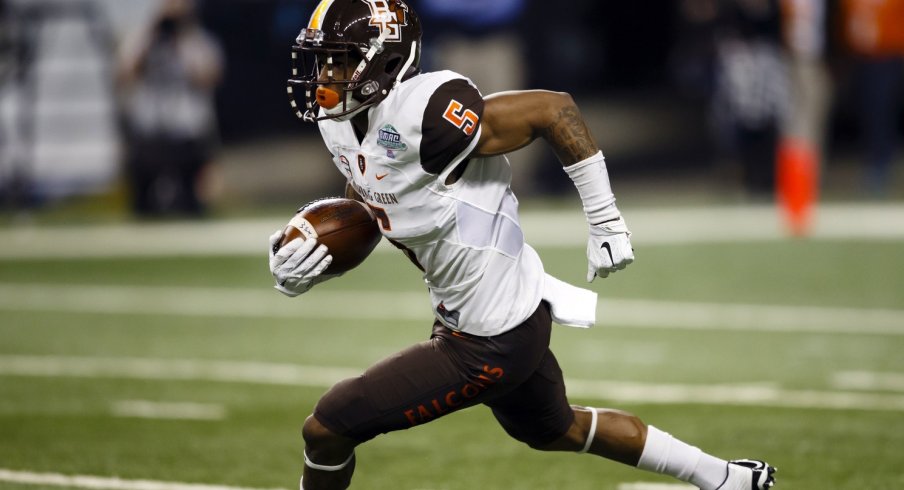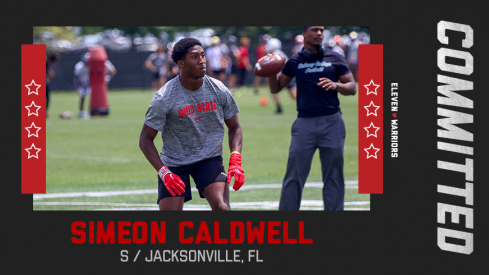Former Santa Clara standout Christoph Tilly, a top-10 center in the transfer portal, commits to Ohio State.
Rarely do the Buckeyes and Falcons find themselves in similar situations. Heading into the 2016 season, however, each program is looking to replace perhaps the greatest exodus of talent in school history.
For Ohio State, the process of replacing players that have left for the NFL is common. Recruiting pitches are filled with images of potential Buckeyes becoming the next great player in Columbus, planting a tree in the grove before moving on to make millions at the next level.
Fifteen miles south of Toledo, however, the pitch is much different. Players that had long dreamt of wearing Scarlet and Gray or Maize and Blue are often left to choose Brown and Orange after being passed over for other, more talented athletes.
Occasionally, though, those that were forgotten show the evaluators that they were wrong, raising their games to another level and bringing glory to their programs. In 2015, the Bowling Green Falcons played just that role, knocking off Maryland easily in week two before rolling through the Mid-American Conference and leaving multiple school and conference records in their wake.
But while the Buckeyes famously lost 12 players to the NFL this offseason, the Falcons lost their star quarterback, Matt Johnson, who threw for nearly 5,000 yards and 46 touchdowns on his way to winning the MAC Player of the Year, as well as his top two targets, starting running back, and best offensive lineman. One of those wideouts, one-time Ohio State commit Roger Lewis with his 1,500 receiving yards and 16 touchdowns, is now in the NFL, while Bowling Green's other 1,000-yard receiver, Gehrig Deiter, moved south to Alabama as a graduate transfer.
To top it off, head coach Dino Babers is now leading the Syracuse Orange, having taken nearly the entire coaching staff with him. In his place, the Falcons brought in Mike Jinks, a former Texas high school coach who most recently spent three seasons as the running backs coach at Texas Tech before adding the title of associate head coach last fall.
While the Red Raiders have famously run the 'Air Raid' system for most of the past two decades, it's unclear how much of what Jinks learned in Lubbock will be brought to northwest Ohio. During his time as a high school coach, his teams ran a diverse offense featuring both pro-style and spread elements, meaning any style or system could be in play.
But within the returning players in brown and orange, a desire to change much schematically may be hard to find. Under Babers, the Falcons ran a system very similar to what we've seen from Urban Meyer's squads in Columbus: a spread-to-run philosophy featuring both zone and gap blocking principles while looking to attack downfield with play-action passing.
Johnson's big arm delivered countless deep throws to Lewis and Deiter, but also to the top returning weapon, Ronnie Moore (No. 5). Though much smaller than the other two, Moore's quickness allowed him to get behind overmatched safeties and linebackers caught in solo coverage against him.
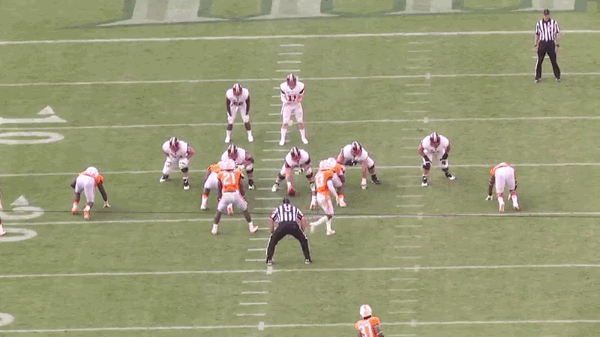
But unlike Lewis and Dieter, Moore is far more dangerous as a runner in the open field, turning simple, short passes into big gains, even against Power-5 teams like Tennessee and Maryland. Acting as the third option, Moore nearly broke the 1K mark himself, finishing with 954 yards receiving with six touchdowns a year ago.
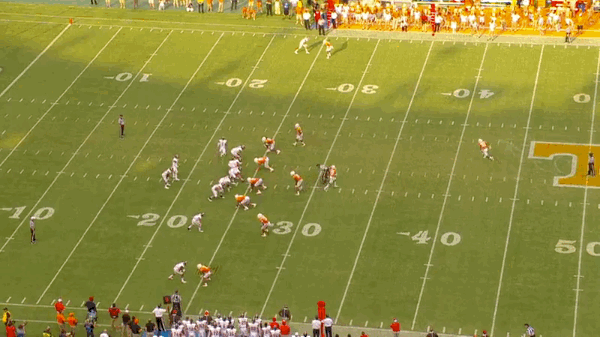
If Jinks does end up bringing some 'Air Raid' principles with him, Moore will likely benefit the most. In lieu of a traditional running game, the Red Raiders often turn short passes, like this 'Follow' route combination, into a designed run with one intended receiver while the remaining wideouts cut off their patterns quickly to block downfield.
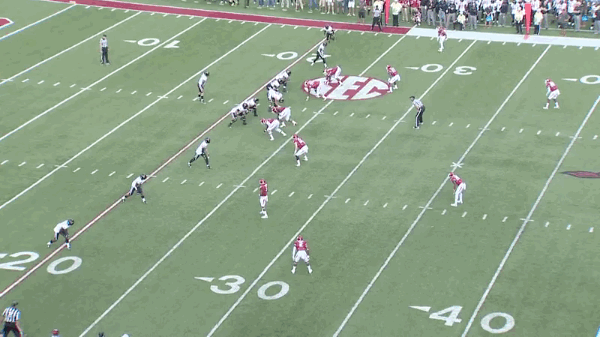
As the Falcons break in a new QB to replace Johnson, either senior James Knapke (No. 3) or redshirt freshman James Morgan (No. 12), one-decision throws like this to a proven threat like Moore should be a no-brainer for the new staff.
But Jinks was a running backs coach at Tech, turning DeAndre Washington into one of the Big 12's best at the position over the past two seasons. If Jinks does make the running game a prominent focus of his game plans, he won't find the cupboard bare when looking for ball carriers.
Though the Falcons lost tailback Travis Greene's 1,300 yards and 15 touchdowns to graduation, his replacement, Fred Coppet (No. 28), often appeared just as capable as a backup last fall. Coppet tallied 825 yards of his own, including big performances against the Volunteers and Terrapins in which he ground out 172 yards combined at a rate of over six yards-per-carry.
At 5-foot-9 and 205 pounds, Coppet is a shifty back with a low center of gravity, allowing him to run through most arm tackles. He did most of his work on delayed 'draw' handoffs last year, showing excellent vision while forcing any tackler to square up perfectly to make a tackle, a task that often proved more difficult than it initially appeared.

On outside runs, Coppet showed a knack for cutting back across the grain before falling forward for his typical two or three extra yards, meaning we may be in for plenty of outside zone runs this weekend in the Horseshoe.

While Coppet certainly isn't the most talented back the Buckeyes have faced in recent memory, his particular skill set may prove difficult to stop for the many young defenders that will take the Ohio Stadium field Saturday. The Silver Bullets must remain disciplined while filling their assigned run gaps and avoid lunging to make tackles, as Coppet is too quick and strong to go down easily.
If the ground game gets going, expect to see a number of different run-pass options, as both the Falcon and Red Raiders offenses featured many last year. Alley defenders like Chris Worley will likely be the first to be attacked by such schemes, pulling him inside to defend against the run before hitting a short pass in his zone, should he be too quick to abandon it.
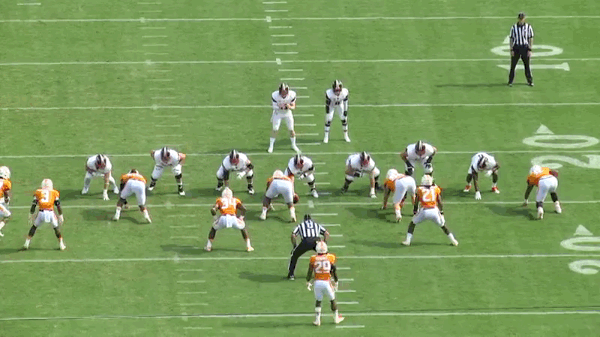
In front of Coppet, four starters return on the Falcon offensive line. While the unit was dominant against in-conference opponents, they appeared less effective when facing better competition. Very often against Tennessee's talented front, Falcon running plays were stuffed from the get-go, as the strong Volunteer line forced double-teams that allowed their linebackers to roam free.

Though the Vols only show five players in the box, both defensive tackles attack the 'A' gaps on either side of the center, forcing him to help his guards and leaving the linebacker unblocked as he comes forward to fill the 'B' gap. Unfortunately, that gap was exactly where the back initially wanted to head, forcing him to stop his feet in the backfield and re-route, delivering the exact outcome the defense desired.
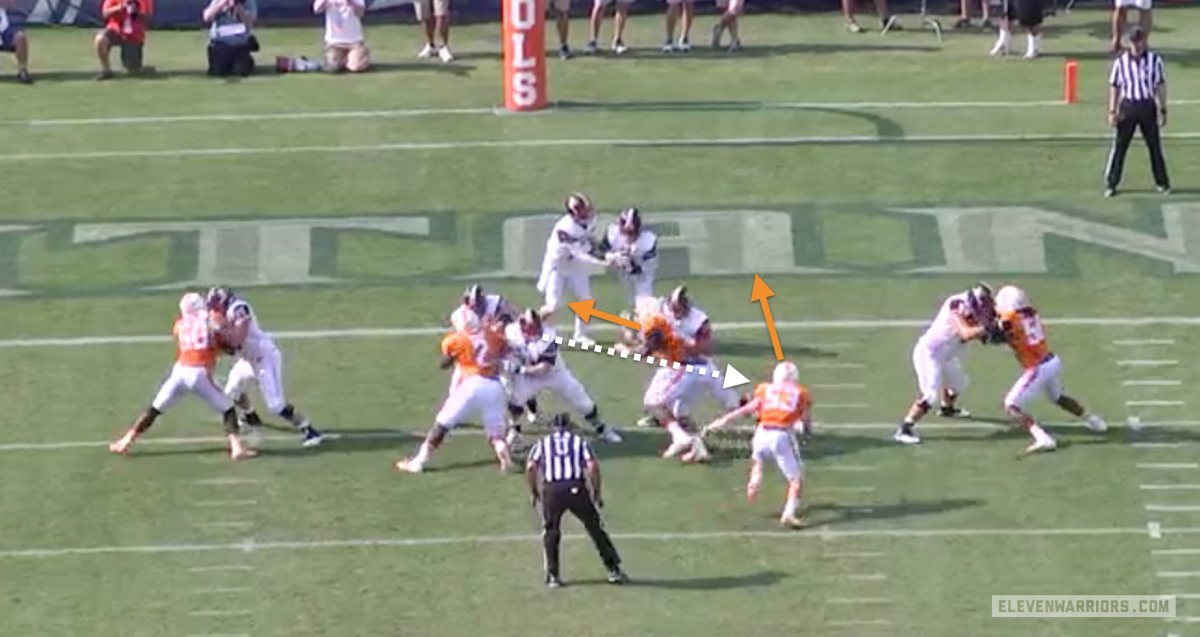
While the Falcons must replace some play-makers on offense, they certainly still have some returning in Moore and Coppet, with others likely waiting in the wings to show their abilities. Bowling Green won the MAC last fall by relying heavily on big plays, unafraid to get into shootouts with their opponents, and that will likely be their goal as they open up the 2016 campaign.
The Buckeyes can't depend on a team that has experienced success like this to simply fold after a few early stops. While the OSU coaching staff has raved about the depth on the defensive line in fall camp, the unit will be put to the test against BGSU. The Ohio State 'Rushmen' will need every one of its members to contribute, stymying the BG running game and keeping the full Falcon offense from ever building momentum.
Defensively, the Falcons should be welcoming a change of approach. Due largely in part to the former staff's penchant for entering into high-scoring affairs, the Bowling Green defense wasn't that impressive on paper, finishing 86th nationally in total yards allowed in 2015.
Unfortunately, Jinks wasn't able to land a big fish to lead that side of the ball, tapping Texas-San Antonio's special teams coordinator and safeties coach Perry Eliano to fill the role. UTSA finished below BGSU in both yards and points allowed last fall, showing a particular weakness against stopping the pass, ranking 117th nationally in that category.
Again, given that the Falcons didn't hire a former coordinator on either side of the ball, it's hard to say exactly what the Buckeyes should expect to see from their first opponents of 2016. However, while the UTSA defense claimed to run a 4-2-5 like their in-state counterparts, TCU, the result looked more like the same 4-3 we see from the Buckeyes.
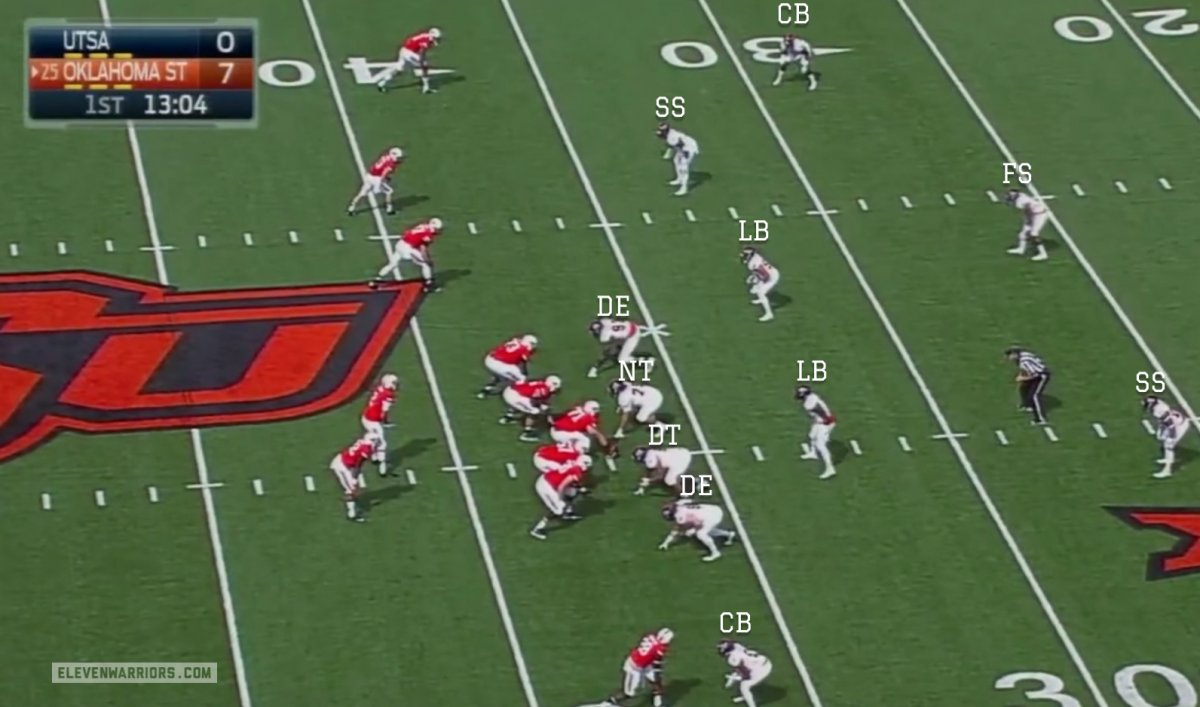
The system is built around freeing up the two inside linebackers to make tackles, something that should suit returning starter Austin Valdez (No. 16) nicely. As a sophomore in 2015, Valdez tallied nearly 11 tackles-per-game last year, and should continue to eat up ball-carriers if given the opportunity. The former quarterback didn't switch positions until after arriving on campus, but just a couple years later, the all-conference performer seems to always be in the right place at the right time, and now has his sights set on the NFL.
To keep Valdez free to make plays, the BGSU defensive line will have to identify young interior players to step up quickly. Though the Falcons return a solid duo of ends in sack leader Terrence Bush (No. 3) and Gus Schwieterman (No. 63), a rotation of players at tackle will have to work to keep the veterans on the interior of the Ohio State offensive line from getting to the second level and getting their hands on Valdez when inside runs like Tight Zone or Power-O are called.
When Eliano's defense in San Antonio was able to force third-downs, they often dealt with the situation in a very conservative manner. The Roadrunners liked to drop as many as eight defenders in coverage, rarely blitzing and instead trying to force 'coverage sacks.'
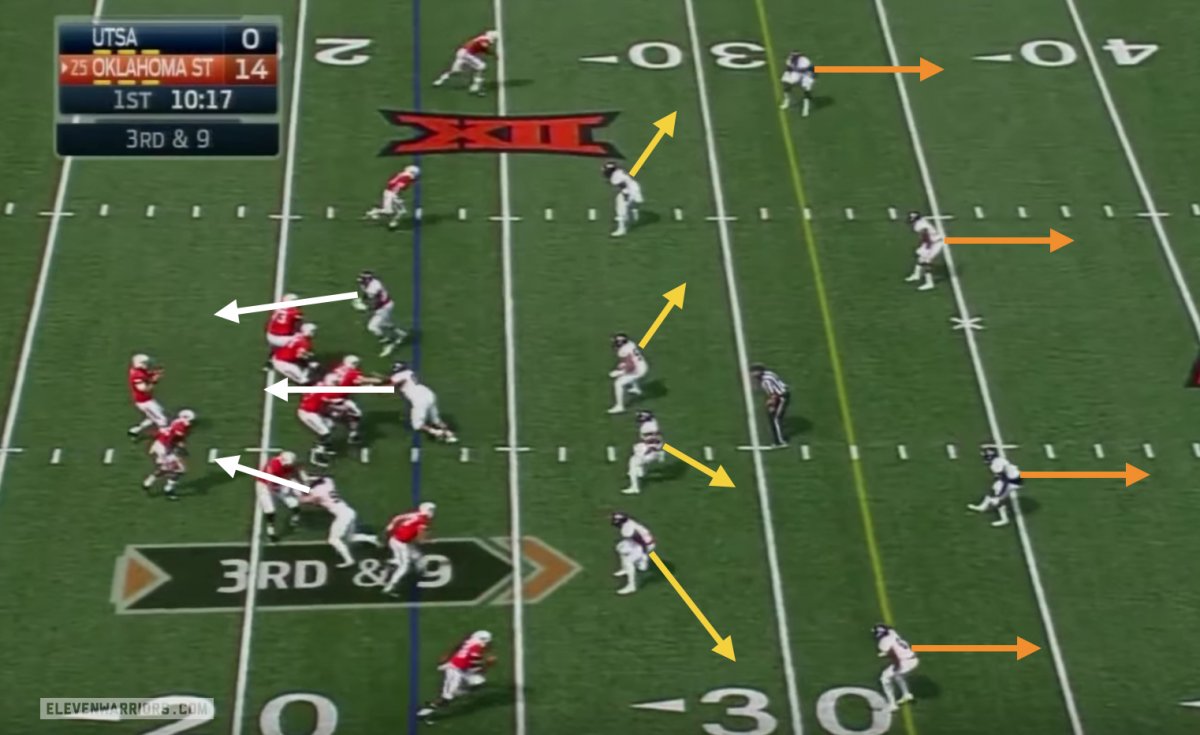
But all too often, that coverage failed to produce the intended results, especially against uptempo offenses. Communication seemed to be an issue for the Roadrunners, who allowed big plays as a result of multiple defenders being on different pages when the ball was snapped.
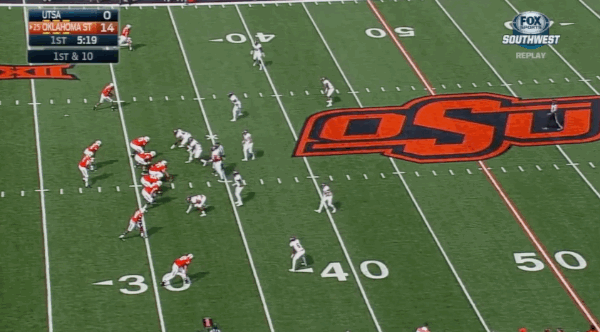
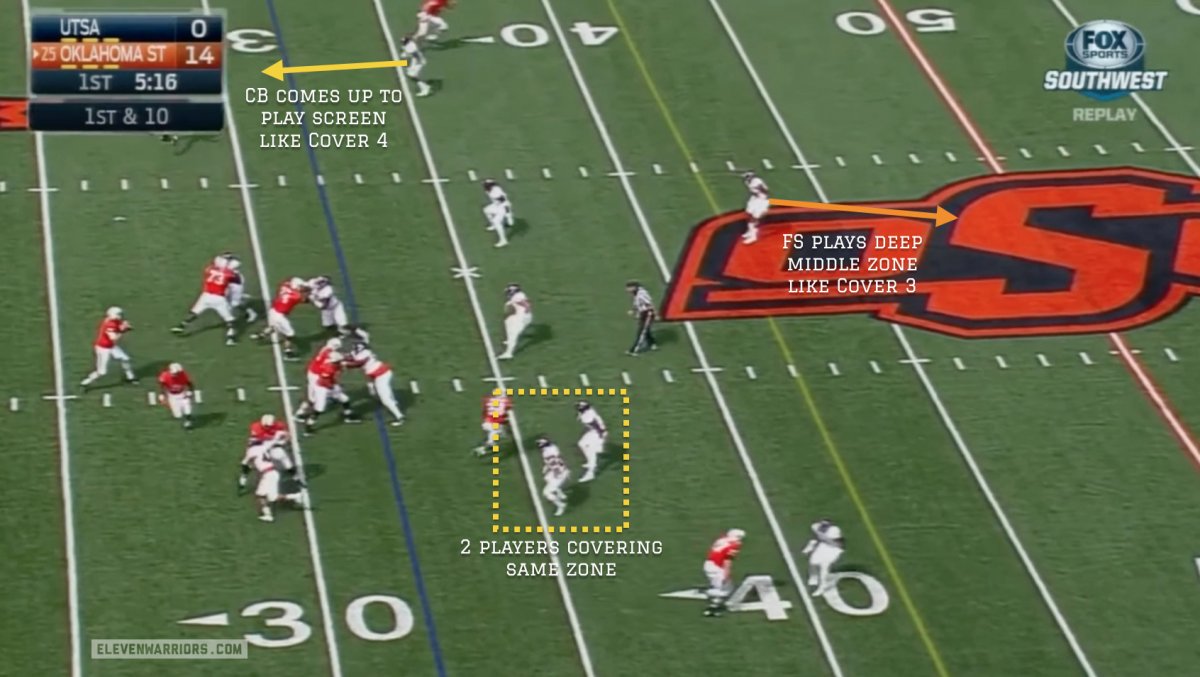
It's hard to know how much blame for these failures should fall on Eliano's shoulders, of course. The Falcons could very well come out in a totally different look and approach to what was seen in San Antonio. However, the Buckeyes should still be able to do whatever they want against this defense.
Expect the Ohio State offense to try and establish the inside running game early and often, with a good amount of no-huddle tempo mixed in. Additionally, Meyer will likely try to get J.T. Barrett into a rhythm early, attempting to replicate the dominant results that came late in the 2015 campaign. Even if the Falcons come out in a totally alignment than what we saw from Eliano last fall, the Buckeyes should have enough size and talent to overwhelm a relatively much smaller opponent.
